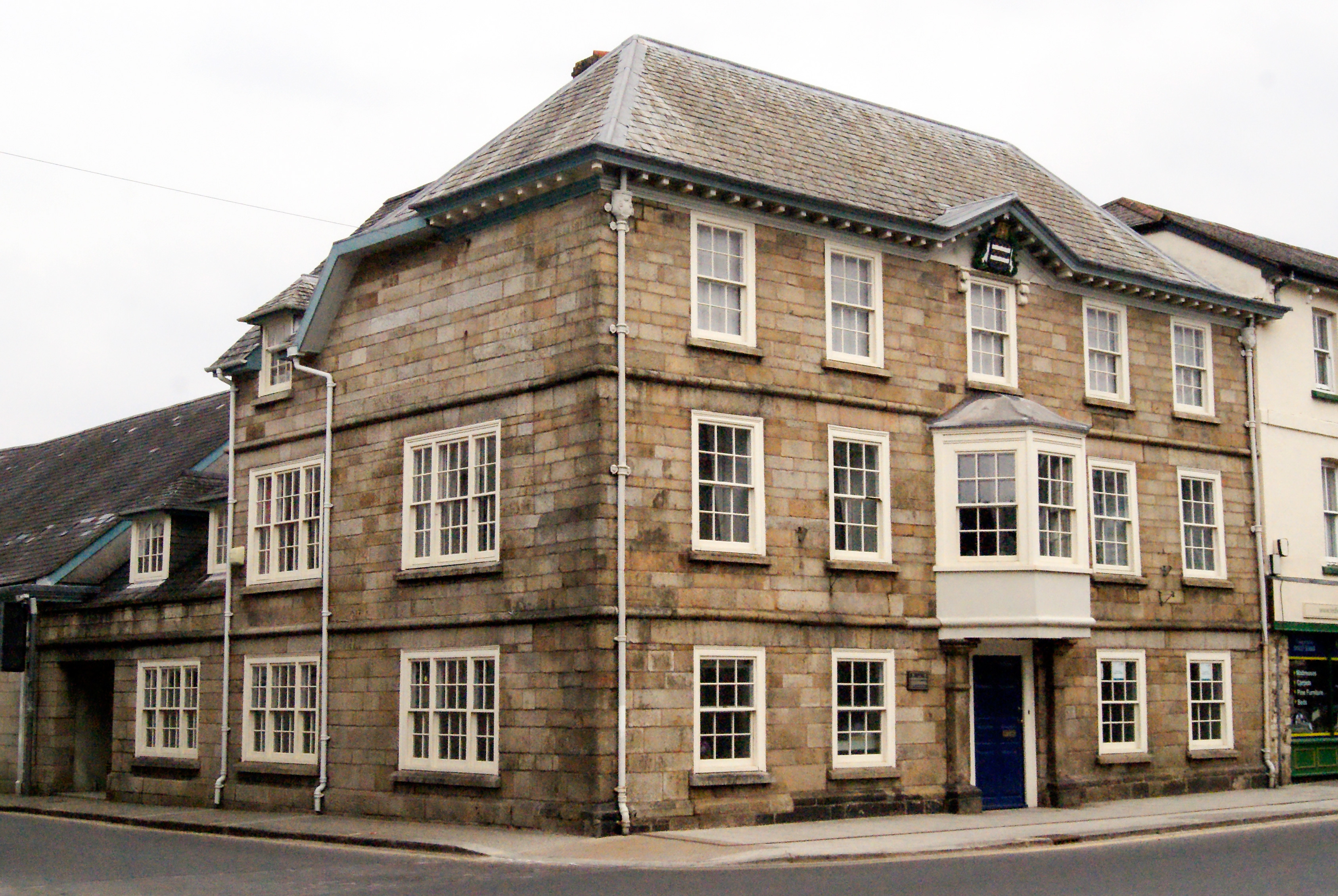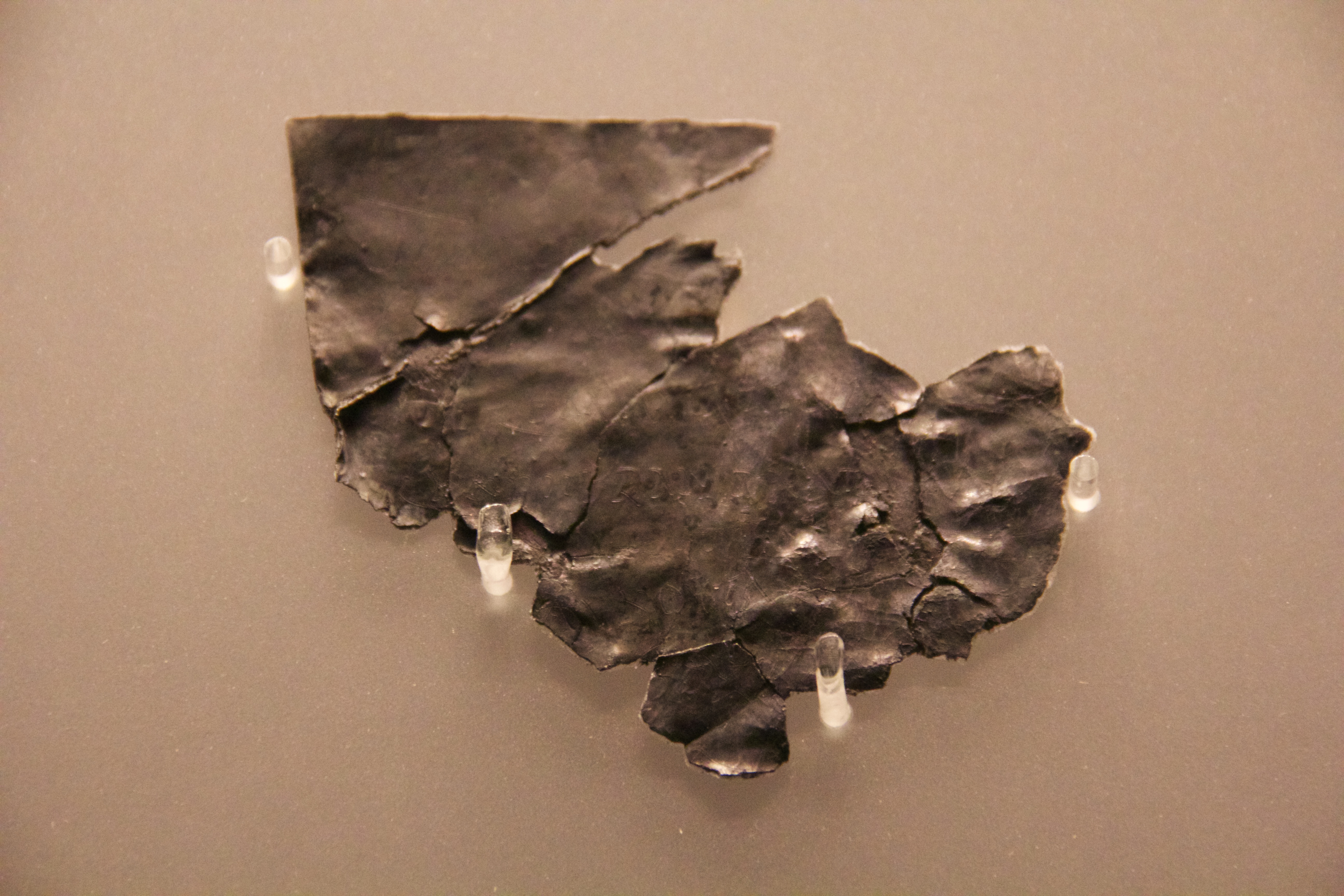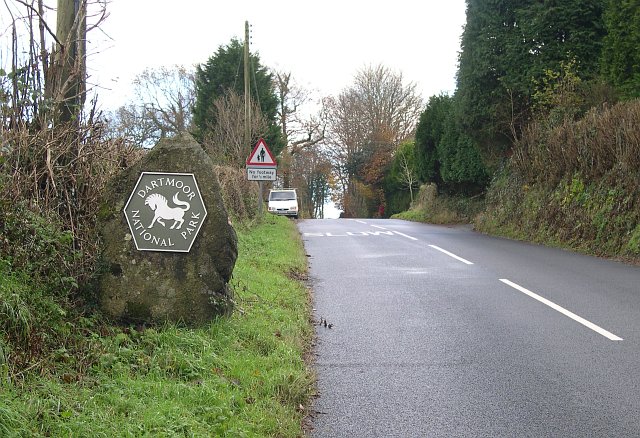|
River Okement
The River Okement is a tributary of the River Torridge in Devon, England. It rises at two places in Dartmoor, as the West Okement and the East Okement. These meet with other minor streams and join together at Okehampton. The river flows generally north, past the villages of Jacobstowe and Monkokehampton, and has its confluence with the River Torridge near Meeth. Toponymy According to ''The Cambridge Dictionary of English Place-Names'' (2004) the derivation of the name is uncertain, but ''The Place-Names of Devon'' (1931) gave possible derivations from the Celtic word ''aku'' meaning "swift" for the first syllable, and for the second either Welsh ''myned'' meaning "to go" or an Aryan root ''mim'', meaning "noisy". The name was first attested in 1244 as ''aqua de Okem''; it appears as ''Okemund'' in 1281; and as ''Ockment flu'' by Saxton in 1577. Transport The West Okement River is crossed by the Meldon Viaduct Meldon Viaduct is a disused railway viaduct crossing the W ... [...More Info...] [...Related Items...] OR: [Wikipedia] [Google] [Baidu] |
Okehampton
Okehampton ( ) is a town and civil parishes in England, civil parish in West Devon in the English county of Devon. At the 2021 census, the parish had a population of 7,313, which was slightly more than the 7,104 recorded at the 2011 census. The Okehampton built-up area had a population of 9,112 at the 2021 census, up from 7,647 in 2011. Okehampton is situated at the northern edge of Dartmoor west of Exeter, north of Plymouth and south of Barnstaple. Toponymy The name means settlement or estate (''tun'') on the River Okement. This is shown by early forms of the name, such as ''Ochementone'' as recorded in the Domesday Book of 1086, and ''Okementon(a)'' in 1167 and 1275. The name was later associated with the common suffix Hampton (place name), ''-hampton'', but as late as the 1930s the original name was remembered by the pronunciation "Okington" or "Okenton" still used by old people in the district. History Okehampton was founded by the Saxons. The earliest written record ... [...More Info...] [...Related Items...] OR: [Wikipedia] [Google] [Baidu] |
Common Brittonic
Common Brittonic (; ; ), also known as British, Common Brythonic, or Proto-Brittonic, is a Celtic language historically spoken in Britain and Brittany from which evolved the later and modern Brittonic languages. It is a form of Insular Celtic, descended from Proto-Celtic, a theorized parent language that, by the first half of the first millennium BC, was diverging into separate dialects or languages. Pictish is linked, most probably as a sister language or a descendant branch. Evidence from early and modern Welsh shows that Common Brittonic was significantly influenced by Latin during the Roman period, especially in terms related to the church and Christianity. By the sixth century AD, the languages of the Celtic Britons were rapidly diverging into Neo-Brittonic: Welsh, Cumbric, Cornish, Breton, and possibly the Pictish language. Over the next three centuries, Brittonic was replaced by Scottish Gaelic in most of Scotland, and by Old English (from which descend M ... [...More Info...] [...Related Items...] OR: [Wikipedia] [Google] [Baidu] |
Dartmoor National Park Authority
The Dartmoor National Park Authority (DNPA) is a national park authority in England, legally responsible for Dartmoor in Devon. It came into existence in its present form in 1997, being preceded by a committee of Devon County Council (from 1951 to March 1974) and the Dartmoor National Park Committee from 1 April 1974. History Dartmoor, in the county of Devon, is in area. It was designated as one of the National Parks of England and Wales by statute in 1951; it has over 34,000 people living within its boundaries, and some 2.2 million people visited it in 2011. First incarnation For the first 23 years of its existence, Dartmoor National Park was administered by a special committee of Devon County Council,Mercer 2009, p. 326 the "Dartmoor Sub-Committee". During this time the major proposals dealt with by the committee included extensions of china clay workings and coniferous plantations (which did not take place); the erection of a television transmitting mast at North Hessary To ... [...More Info...] [...Related Items...] OR: [Wikipedia] [Google] [Baidu] |
Devon County Council
Devon County Council is the county council administering the English county of Devon. The council is based at Devon County Hall in the city of Exeter. The area administered by the county council is termed the non-metropolitan county, which is smaller than the ceremonial county; the non-metropolitan county excludes Plymouth and Torbay. The population of the non-metropolitan county was estimated at 795,286 in 2018, making it the most populous local authority in South West England. Devon is an area with "two-tier" local government, meaning that the county is divided into non-metropolitan districts carrying out less strategic functions, such as taking most planning decisions. There are eight such districts in the county council's area, each with its own district, borough, or city council. History Administration Devon County Council was established in 1889 under the Local Government Act 1888, which created elected county councils to take over the administrative functions previ ... [...More Info...] [...Related Items...] OR: [Wikipedia] [Google] [Baidu] |
London And South Western Railway
The London and South Western Railway (LSWR, sometimes written L&SWR) was a railway company in England from 1838 to 1922. Originating as the London and Southampton Railway, its network extended to Dorchester and Weymouth, to Salisbury, Exeter and Plymouth, and to Padstow, Ilfracombe and Bude. It developed a network of routes in Hampshire, Surrey and Berkshire, including Portsmouth and Reading. The LSWR became famous for its express passenger trains to Bournemouth and Weymouth, and to Devon and Cornwall. Nearer London it developed a dense suburban network and was pioneering in the introduction of a widespread suburban electrified passenger network. It was the prime mover of the development of Southampton Docks, which became an important ocean terminal as well as a harbour for cross channel services and for Isle of Wight ferries. Although the LSWR's area of influence was not the home of large-scale heavy industry, the transport of goods and mineral traffic was a major activity ... [...More Info...] [...Related Items...] OR: [Wikipedia] [Google] [Baidu] |
Meldon Viaduct
Meldon Viaduct is a disused railway viaduct crossing the West Okement River at Meldon, Devon, Meldon, south-west of Okehampton, on the edge of Dartmoor in Devon, South West England. This truss bridge was constructed from wrought iron, instead of stone or brick arches. It opened in 1874 for a single track; in 1879 its width was doubled for a second track. Although regular services were withdrawn in 1968, the bridge was used for shunting by a local quarry. In the 1990s the remaining single track was removed. The crossing is now used by the Granite Way, a Cycling infrastructure, cycle track skirting Dartmoor. It is a scheduled monument, and is one of only two surviving railway bridges in the United Kingdom that use wrought iron lattice piers to support wrought iron trusses. History In the 19th century, the London and South Western Railway (LSWR) was in competition with the Great Western Railway (GWR) to provide passenger trains from London Waterloo station, London to Devon and Co ... [...More Info...] [...Related Items...] OR: [Wikipedia] [Google] [Baidu] |
Christopher Saxton
Christopher Saxton (c. 1540 – c. 1610) was an English cartographer who produced the first county maps of England and Wales. Life and family Saxton was probably born in Sowood, Ossett in the parish of Dewsbury, in the West Riding of Yorkshire in either 1542 or 1544. His family subsequently moved to the hamlet of Dunningley near Tingley in the parish of Woodkirk where the Saxton name is recorded in 1567. It is speculated that Saxton may have attended the predecessor school to Queen Elizabeth Grammar School, Wakefield and also speculated that he was a student at Cambridge University but neither is corroborated. It is most likely that John Rudd, the vicar of Dewsbury and Thornhill, a keen cartographer passed his skills to Saxton. Saxton married and had three children. Robert, born in 1585, was his father's assistant in 1601 and drew a map of Snapethorpe in Wakefield when it was surveyed by his father. Robert was commissioned to survey Sandal Magna in 1607. Christopher Saxto ... [...More Info...] [...Related Items...] OR: [Wikipedia] [Google] [Baidu] |
Attest
{{Disambiguation ...
Attestation may refer to: * Attestation clause, verification of a document * The date from which the service of a member of the armed forces begins is the date of ''attestation'', on which the oath of allegiance is sworn (though the recruit might not report for training until a later date) * Various police oaths in the United Kingdom * The process of validating the integrity of a computing device such as a server needed for trusted computing * Attested language * Testimony Testimony is a solemn attestation as to the truth of a matter. Etymology The words "testimony" and "testify" both derive from the Latin word ''testis'', referring to the notion of a disinterested third-party witness. Law In the law, testimon ... [...More Info...] [...Related Items...] OR: [Wikipedia] [Google] [Baidu] |
Proto-Indo-European Language
Proto-Indo-European (PIE) is the reconstructed common ancestor of the Indo-European language family. No direct record of Proto-Indo-European exists; its proposed features have been derived by linguistic reconstruction from documented Indo-European languages. Far more work has gone into reconstructing PIE than any other proto-language, and it is the best understood of all proto-languages of its age. The majority of linguistic work during the 19th century was devoted to the reconstruction of PIE and its daughter languages, and many of the modern techniques of linguistic reconstruction (such as the comparative method) were developed as a result. PIE is hypothesized to have been spoken as a single language from approximately 4500 BCE to 2500 BCE during the Late Neolithic to Early Bronze Age, though estimates vary by more than a thousand years. According to the prevailing Kurgan hypothesis, the original homeland of the Proto-Indo-Europeans may have been in the Pon ... [...More Info...] [...Related Items...] OR: [Wikipedia] [Google] [Baidu] |
Victor Watts
Victor Watts, (18 April 1938 – 21 December 2002) was a British toponymist, medievalist, translator, and academic, specialising in English place-names. He served as Master of Grey College, Durham from 1989 until his sudden death in 2002. He had been a lecturer in English at Durham University from 1962, honorary director of the English Place-Name Survey from 1993, and editor of the ''Journal of the English Place-Name Society'' from 1996. Early life and education Watts was born on 18 April 1938. He was educated at Bristol Grammar School, then an all-boys private school in Bristol. He studied at Merton College, Oxford, and at the University of London. Academic career In 1962, Watts jointed Durham University as a lecturer in English language. He was promoted to senior lecturer in 1974. His first association with Grey College, Durham was as a pastoral tutor. Then, from 1984 to 1989, he served as the college's senior tutor and vice-master. In 1989, he was appointed Master of Gr ... [...More Info...] [...Related Items...] OR: [Wikipedia] [Google] [Baidu] |
Devon
Devon ( ; historically also known as Devonshire , ) is a ceremonial county in South West England. It is bordered by the Bristol Channel to the north, Somerset and Dorset to the east, the English Channel to the south, and Cornwall to the west. The city of Plymouth is the largest settlement, and the city of Exeter is the county town. The county has an area of and a population of 1,194,166. The largest settlements after Plymouth (264,695) are the city of Exeter (130,709) and the Seaside resort, seaside resorts of Torquay and Paignton, which have a combined population of 115,410. They all are located along the south coast, which is the most populous part of the county; Barnstaple (31,275) and Tiverton, Devon, Tiverton (22,291) are the largest towns in the north and centre respectively. For local government purposes Devon comprises a non-metropolitan county, with eight districts, and the Unitary authorities of England, unitary authority areas of Plymouth City Council, Plymouth an ... [...More Info...] [...Related Items...] OR: [Wikipedia] [Google] [Baidu] |
Monkokehampton
Monkokehampton is a village and civil parish in West Devon, England. The village lies on the River Okement, about east-north-east of Hatherleigh. The parish is bounded by Hatherleigh, Exbourne, Broadwoodkelly and Iddesleigh, and had a population of 139 at the 2011 Census. Alternative names for Monkokehampton are "Monk Okehampton", "Okehampton" and "Okehampton Monk". Features There are 16 listed buildings in Monkokehampton. Monkokehampton has a church called All Saints. History Monkokehampton was recorded in the Domesday Book as ''Monuchementone''/''Monacochamentona''. Monk Okehampton once belonged to Glastonbury Abbey Glastonbury Abbey was a monastery in Glastonbury, Somerset, England. Its ruins, a grade I listed building and scheduled ancient monument, are open as a visitor attraction. The abbey was founded in the 8th century and enlarged in the 10th. It wa .... The parish was historically in the Black Torrington hundred. On the 25th of March 1885 Barntown, Upc ... [...More Info...] [...Related Items...] OR: [Wikipedia] [Google] [Baidu] |






